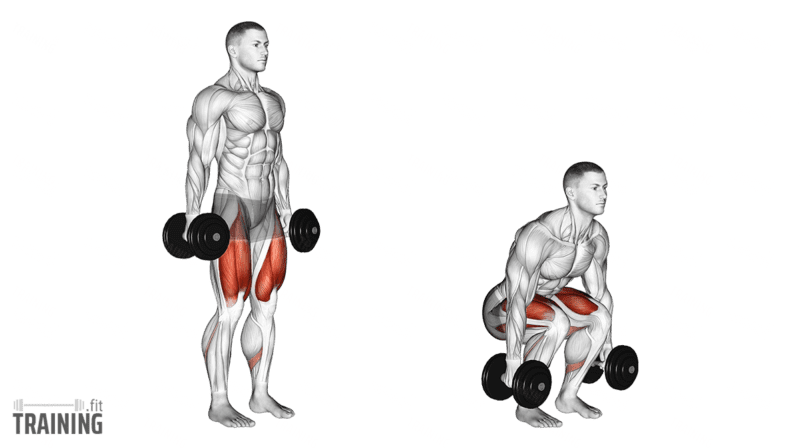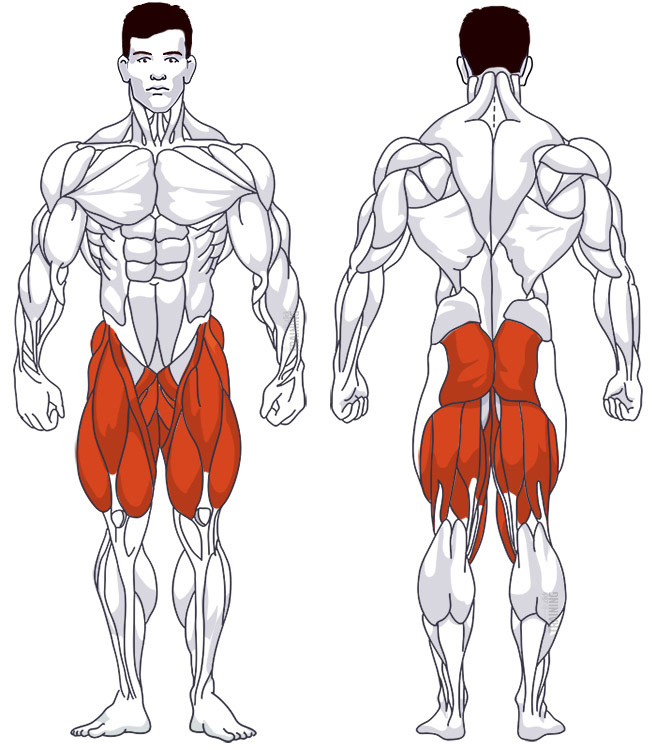Dumbbell Squats
Compound exercise, Free weightsOverview

Main muscles
- Thigh: Long adductor muscle
(Musculus adductor longus) - Thigh: Quadriceps
(Musculus quadriceps femoris) - Thigh: Thigh flexor
(Musculus biceps femoris) - Buttocks: Large gluteus maximus
(Musculus gluteus maximus)
Training plans
Here you can find example plans for dumbbell squats training:
Dumbbell Squats: Basics and alternatives

Involved main muscle groups:
Dumbbell Squats
Dumbbell squats are a great variation of regular squats, perfect for home workouts. The movement is pretty similar to bodyweight squats: you bend your knees, lower your butt, and then stand back up. The main difference is that you hold a dumbbell in each hand at your sides instead of extending your arms in front of you.
This exercise engages multiple leg muscles and your lower back, making it an essential strength training move that shouldn’t be overlooked in any workout plan.
You can also try different squat variations, like front squats with a barbell, Zercher squats, regular barbell squats, or bodyweight squats. Hack squats are another great machine-based alternative.
Correct execution
Performing squats with dumbbells adds a bit more challenge due to the extra weight. It’s crucial to lift the weight using your legs without arching your back at any point.
Aside from that, the movement is relatively simple and a natural part of everyday life.
Video tutorial
Step-by-step instructions
Grab the dumbbells and stand with your feet shoulder-width apart. Hold the dumbbells at your sides, in line with your ankles/feet.
Bend your knees and lower your butt, pushing it back and leaning your upper body slightly forward.
Keep the dumbbells in a straight line as you lower them, aligned with your ankles throughout the movement.
Stop lowering yourself when your thighs are parallel to the floor.
Stand back up by straightening your knees and raising your torso.
Common mistakes
The most frequent error when doing squats is improper back posture. Your back shouldn’t be arched during the exercise. Ensure your lower back has a slight curve and your upper back remains straight.
Also, make sure the dumbbells move in a straight line and don’t swing in any direction. At the end of the downward motion, they should be beside your ankles.
Lastly, avoid letting your knees extend past your toes. This puts excessive stress on your knee joints. To prevent this, don’t lower your body straight down, but push your butt back a bit during the downward movement, as if you’re sitting down.